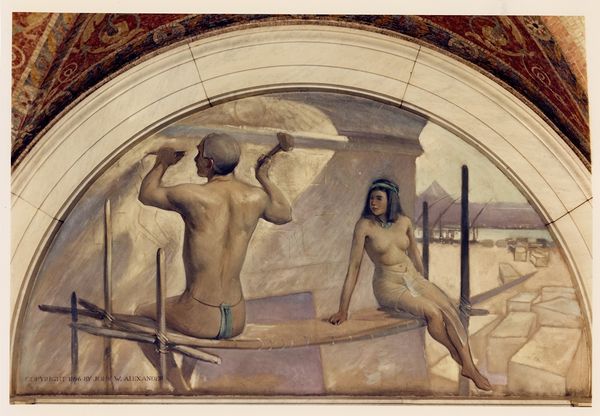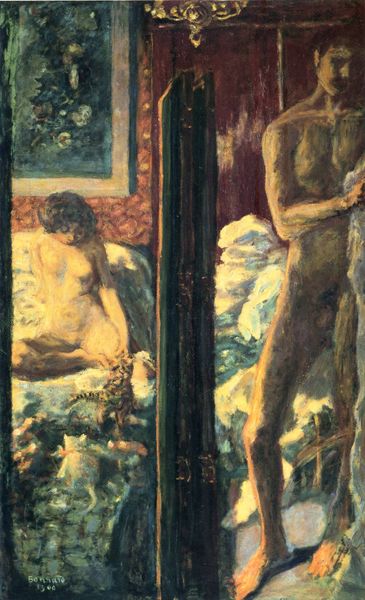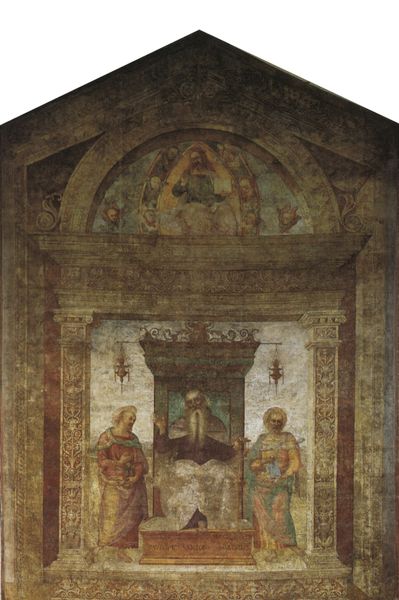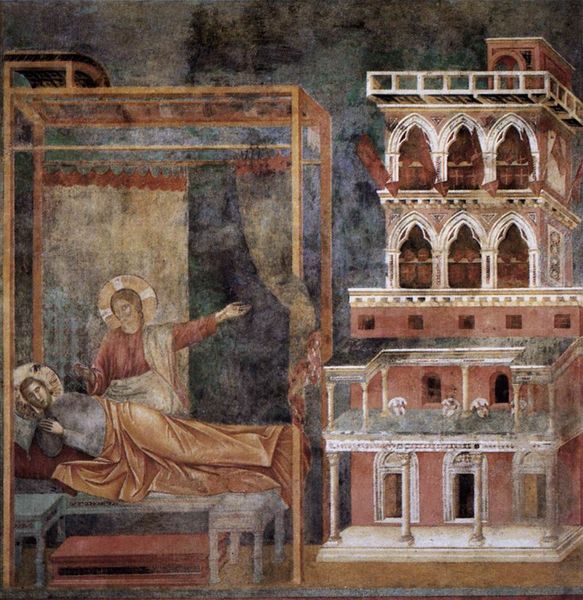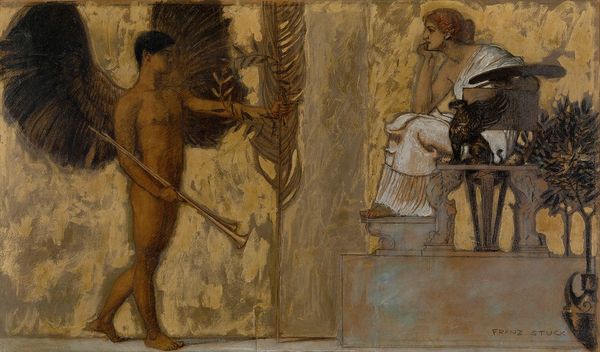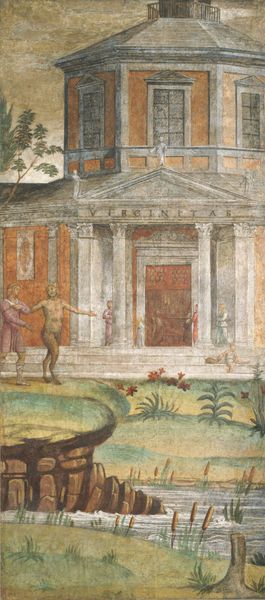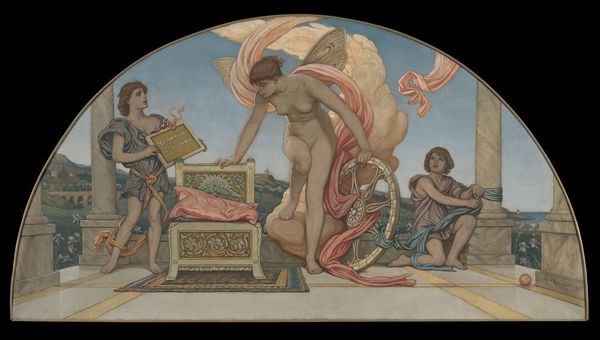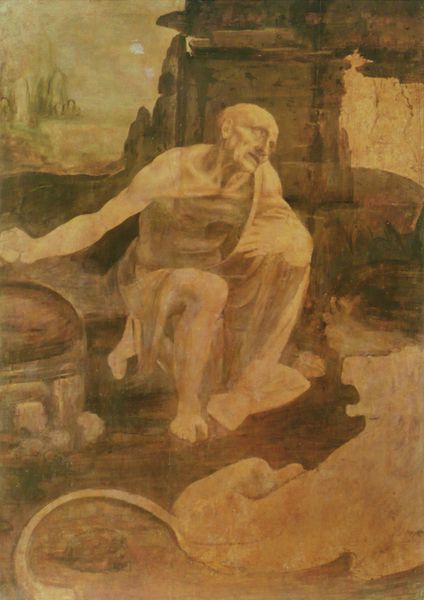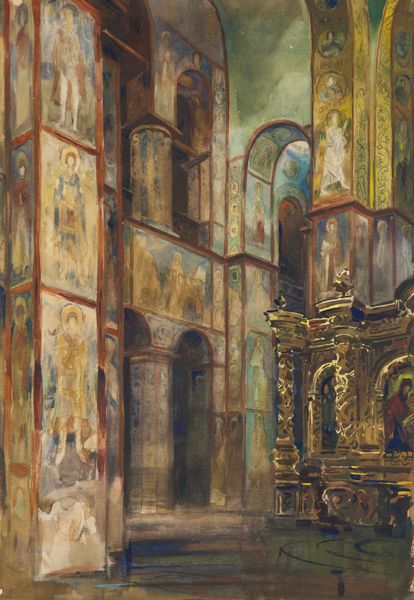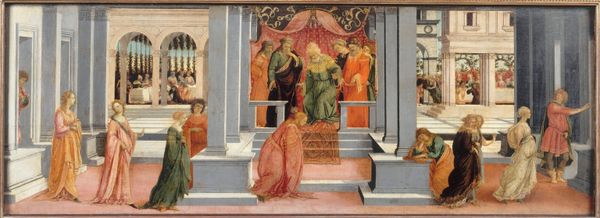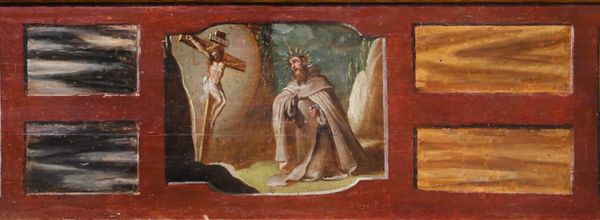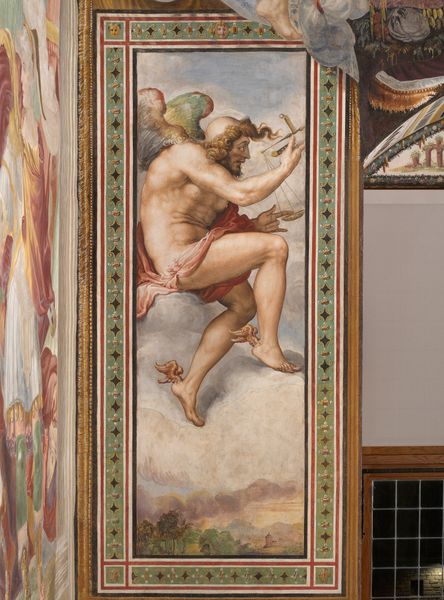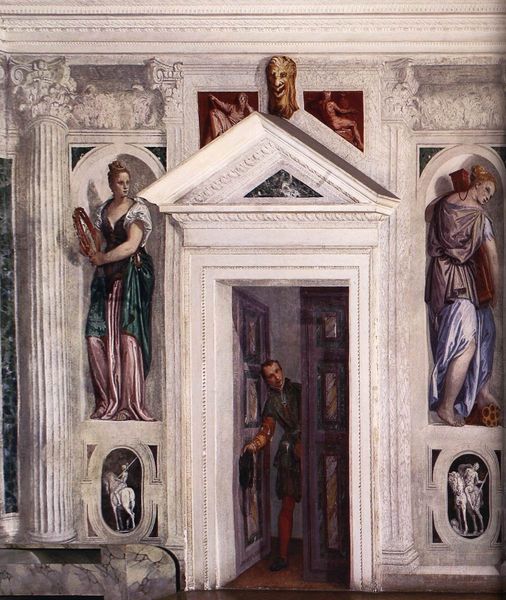
tempera, painting
#
narrative-art
#
tempera
#
painting
#
painted
#
figuration
#
oil painting
#
christianity
#
mythology
#
line
#
history-painting
#
italian-renaissance
#
realism
#
christ
Copyright: Public domain
Curator: This is Pietro Perugino's "Christ in the Sarcophagus," created around 1473 using tempera. The painting compels immediate attention with its composition and the profound moment it captures. Editor: There’s a striking fragility in the figure—almost a sense of violated dignity conveyed through the way his body slumps in that surprisingly ornate sarcophagus. What do you make of this interplay? Curator: The composition balances the divine with earthly suffering. Note how Perugino uses line to create a sense of harmony but also isolation. The halo signifies Christ's divinity, of course, but the pallor of his skin and the subtle wounds underscore his humanity. The vertical lines behind Christ help accentuate his figure, but equally reinforce his state of vulnerability. Editor: I see that fragility echoed in what appears to be the rapid, perhaps uneven layering of paint in the backdrop. There's a sense of urgency—as if we are catching a fleeting glimpse into a very private moment following an act of violence performed by laborers and then artisans, a social and political structure of great exploitation—all culminating in a single action on Calvary. What might we glean about the cultural understanding of labor, justice, or even violence by looking closer at its creation and history? Curator: Interesting, I see your point about the contrast, especially juxtaposed against the idealized, smooth forms we typically associate with Renaissance painting, or even the gold ornamentation in the background. He seems trapped in time. Editor: Trapped perhaps is key, yes! Look closely at the tools staged around him, they remind us both of his torture but are rendered as almost innocuous stagecraft. It's quite the power dynamic he’s stuck within. I would not at all be surprised to see this as more aligned with everyday experience of people involved with the process of making during that era and more. It is all these layers of material processes that create this effect. Curator: Looking at the painting this way helps reveal how even within such a familiar scene of piety, there can still be layers of social awareness about how material production impacted the world and our beliefs, making the artwork both transcendent and deeply human. Editor: Precisely. A convergence of spiritual narrative and the often-stark realities of earthly production that gave the narrative tangible form.
Comments
No comments
Be the first to comment and join the conversation on the ultimate creative platform.

